Foundation Year
The English curriculum is built around the three interrelated strands of language, literature and literacy. Teaching and learning programs should balance and integrate all three strands. Together, the three strands focus on developing students' knowledge, understanding and skills in listening, reading, viewing, speaking, writing and creating. Learning in English builds on concepts, skills and processes developed in earlier years, and teachers will develop and strengthen these as needed.
In the Foundation year, students communicate with peers, teachers, known adults and students from other classes.
Students engage with a variety of texts for enjoyment. They listen to, read and view spoken, written and multimodal texts in which the primary purpose is to entertain, as well as some texts designed to inform. These include traditional oral texts, picture books, various types of stories, rhyming verse, poetry, non-fiction, film, multimodal texts and dramatic performances. They participate in shared reading, viewing and storytelling using a range of literary texts, and recognise the entertaining nature of literature.
The range of literary texts for Foundation to Year 10 comprises Australian literature, including the oral narrative traditions of Aboriginal and Torres Strait Islander Peoples, as well as the contemporary literature of these two cultural groups, and classic and contemporary world literature, including texts from and about Asia. Literary texts that support and extend Foundation students as beginner readers include decodable and predictable texts that range from caption books to books with one or more sentences per page. These texts involve straightforward sequences of events and everyday happenings with recognisable, realistic or imaginary characters. Informative texts present a small amount of new content about familiar topics of interest; a small range of language features, including simple and compound sentences; mostly familiar vocabulary, known, high-frequency words and single-syllable words that can be decoded phonically, and illustrations that strongly support the printed text.
Students create a range of imaginative, informative and persuasive texts including pictorial representations, short statements, performances, recounts and poetry.
(source: www.australiancurriculum.edu.au)
Achievement Standard
Receptive modes (listening, reading and viewing)
By the end of the Foundation year, students use predicting and questioning strategies to make meaning from texts. They recall one or two events from texts with familiar topics. They understand that there are different types of texts and that these can have similar characteristics. They identify connections between texts and their personal experience.
They read short, decodable and predictable texts with familiar vocabulary and supportive images, drawing on their developing knowledge of concepts of print, sounds and letters and decoding and self-monitoring strategies. They recognise the letters of the English alphabet, in upper and lower case and know and use the most common sounds represented by most letters. They read high-frequency words and blend sounds orally to read consonant-vowel-consonant words. They use appropriate interaction skills to listen and respond to others in a familiar environment. They listen for rhyme, letter patterns and sounds in words.
Productive modes (speaking, writing and creating)
Students understand that their texts can reflect their own experiences. They identify and describe likes and dislikes about familiar texts, objects, characters and events.
In informal group and whole class settings, students communicate clearly. They retell events and experiences with peers and known adults. They identify and use rhyme, and orally blend and segment sounds in words. When writing, students use familiar words and phrases and images to convey ideas. Their writing shows evidence of letter and sound knowledge, beginning writing behaviours and experimentation with capital letters and full stops. They correctly form known upper- and lower-case letters.
(source: www.australiancurriculum.edu.au)
- Plus Plan
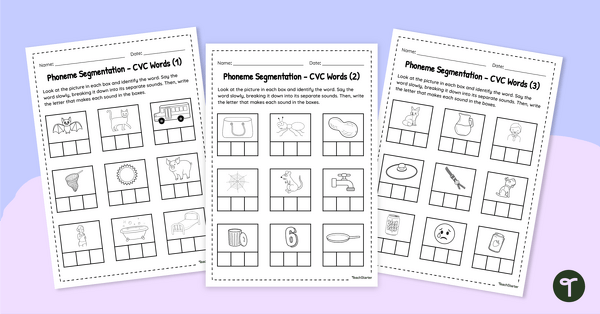
Phoneme Segmentation Worksheets - CVC Words
Use this worksheet pack to give students practice at segmenting words into phonemes.
- Plus Plan
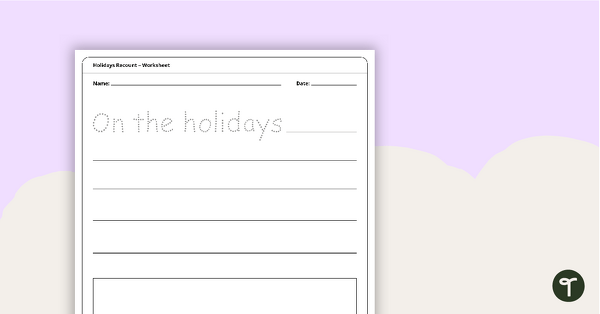
Holiday Recount Worksheet
A worksheet for younger students to use when writing a holiday recount.
- Plus Plan
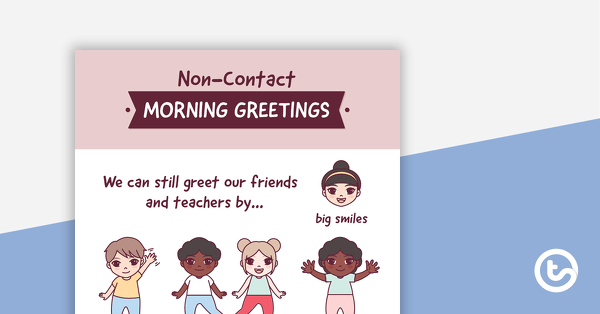
Non-Contact Morning Greetings Posters
Non-contact greetings that students can do with their teachers and peers.
- Plus Plan
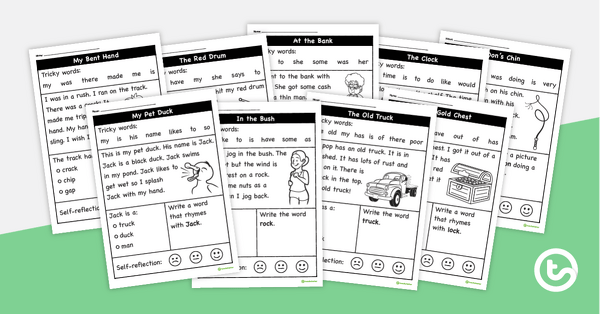
Decodable Text Worksheets – Common Consonant Digraphs (Set 2)
A set of 10 decodable text worksheets for early readers.
- Plus Plan
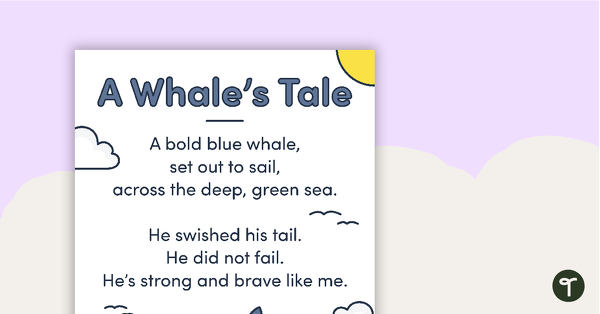
A Whale's Tale - Simple Rhyming Poetry Poster
A simple rhyming poem perfect for developing a love of reading and writing poetry.
- Plus Plan
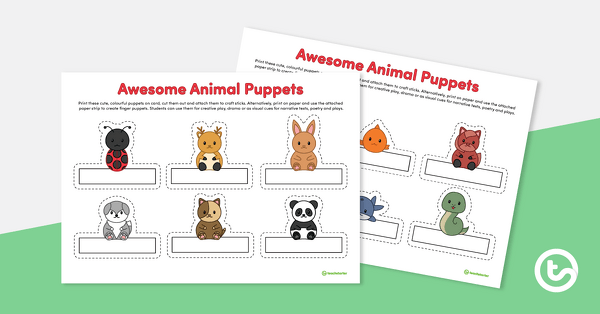
Adorable Animal Finger Puppets Template
Download a set of 12 animal finger puppets to use when teaching poetry, creating narratives and more.
- Plus Plan
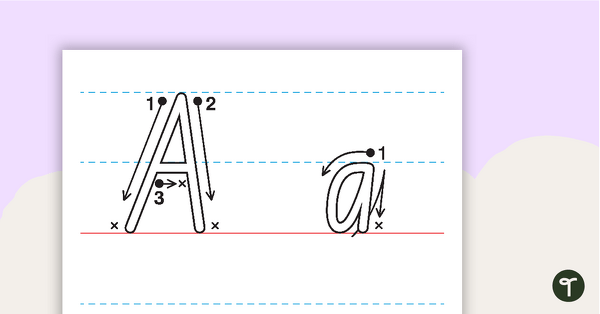
School Font Tracing Alphabet with Arrows
Full page upper and lower case alphabet letters with arrows for tracing.
- Plus Plan

CVC Words – Playdough Mats
45 pages of three-letter consonant-vowel-consonant words for students to practise writing and forming in playdough.
- Plus Plan
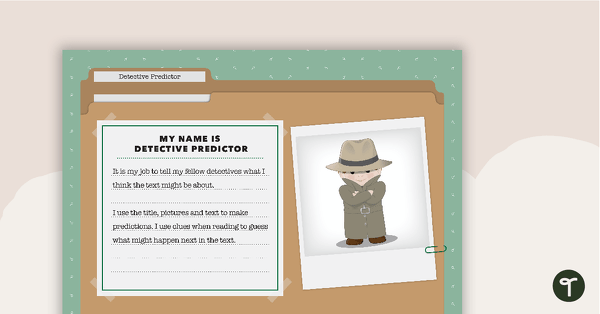
Reading Detectives Posters and Banner
8 colourful reading detective posters and a banner to display in the classroom.
- Plus Plan
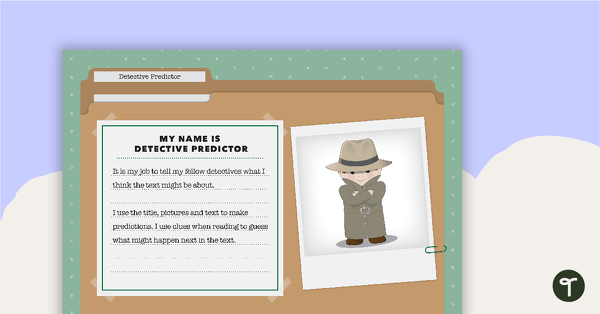
Reading Detectives Resource Pack
A 16 page resource pack including 8 detective roles to assign to students during guided reading sessions.
- Plus Plan
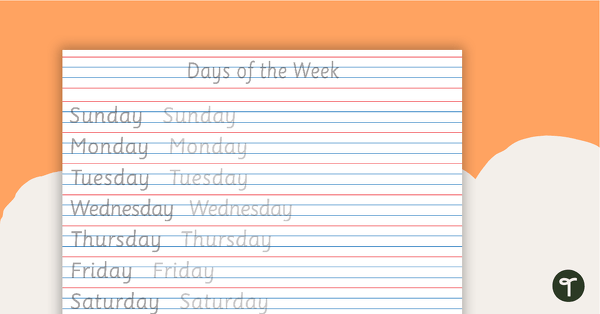
Handwriting Sheet - Days of the Week
A handwriting sheets for the days of the week.
- Plus Plan
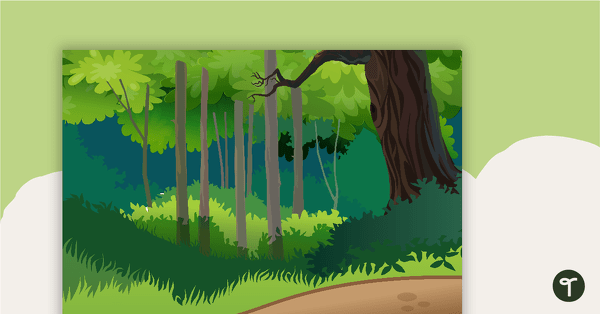
Fairy Tales Settings Posters
A set of 6 fairytale story settings background posters.
- Plus Plan
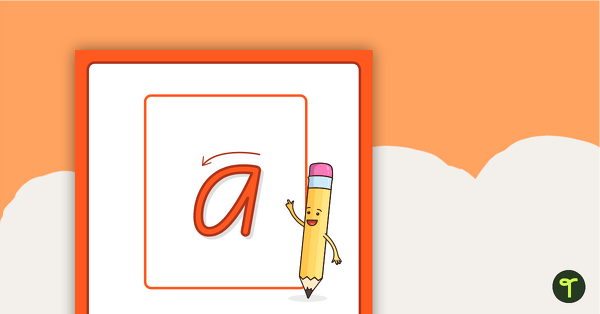
Letter Formation Alphabet Posters (With Instructions)
A set of letter formation alphabet posters, with simple instructions, to display in the classroom.
- Plus Plan
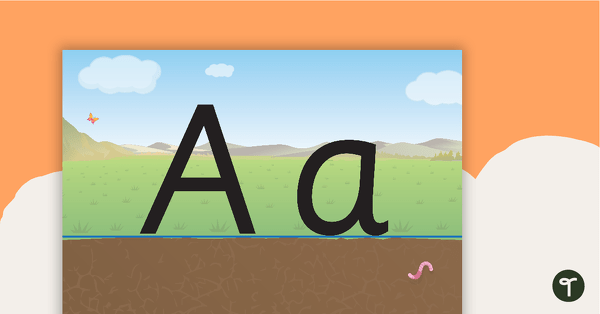
Handwriting Posters - Dirt, Grass and Sky Background
Handwriting posters using a dirt, grass and sky background.
- Plus Plan

Reading Detectives Worksheets
8 reading detective worksheets to use during guided reading sessions in the classroom.
- Plus Plan
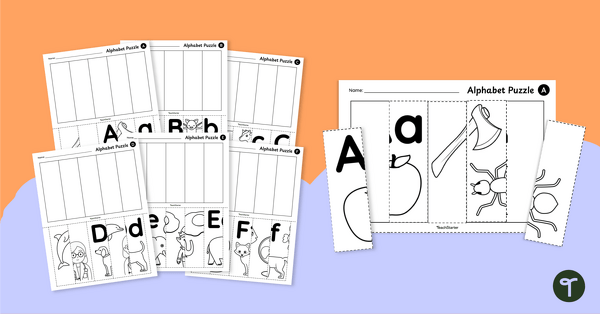
Uppercase and Lowercase Matching Activity Pack
Use these uppercase and lowercase matching cut and paste activities to help students identify and name both forms of each letter.
- Plus Plan
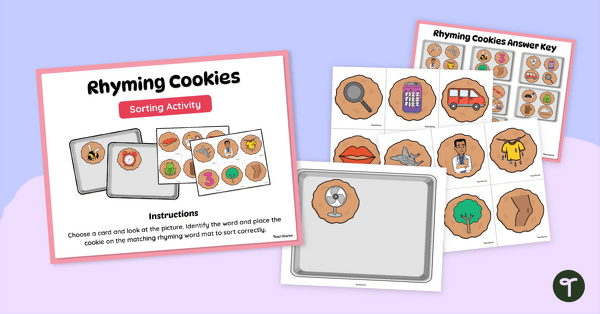
Rhyming Sort Cookies Activity Mats
Use this cookie tray rhyming sort to explore the auditory component of rhyming words to develop phonemic awareness in your students.
- Plus Plan
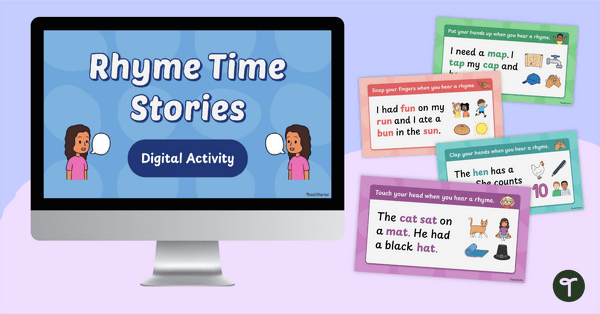
Rhyme Time Stories PowerPoint
Use this Rhyme Time Stories PowerPoint to explore auditory recognition of rhyming words with your young readers.
- Plus Plan

Text to Self Connection Task Cards
Explore connections to self with these text to self connection task cards.
- Plus Plan
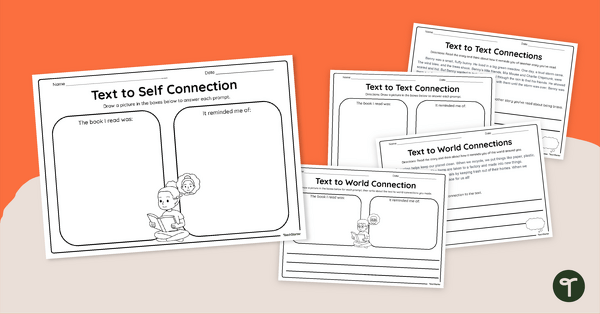
Making Connections Worksheet Set
Allow your students to record their connections to a particular text with this Making Connections Worksheet set.
- Plus Plan
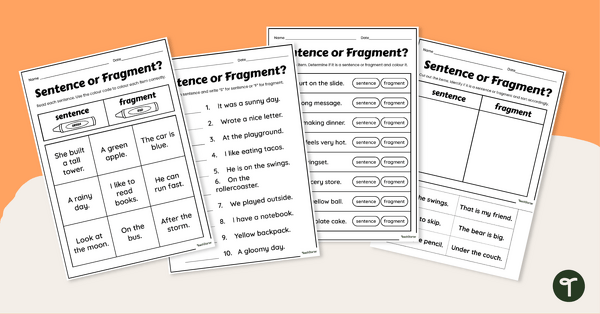
Sentence vs Fragment Worksheet Pack
Help students master the difference between what is a sentence and a fragment with this easy-to-use Sentence vs Fragment Worksheet Pack.
- Plus Plan
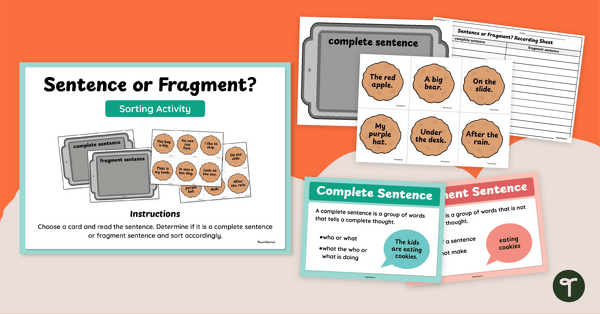
Complete Sentence vs Fragment Sentence Sort
Make sentence structure lessons engaging and hands-on with this playful Complete Sentence vs Fragment sorting activity.
- Plus Plan
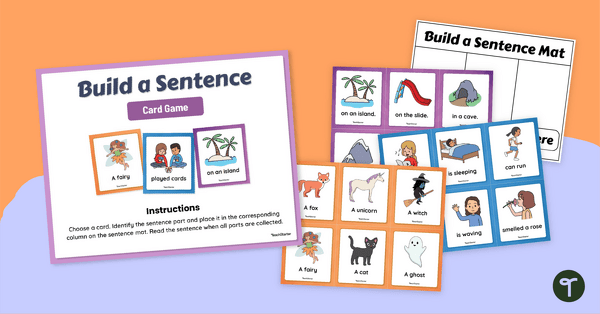
Sentence Building Cards and Mat
Use these Sentence Building Cards with Mat to explore the main features of a simple sentence with your Prep students.
- Plus Plan
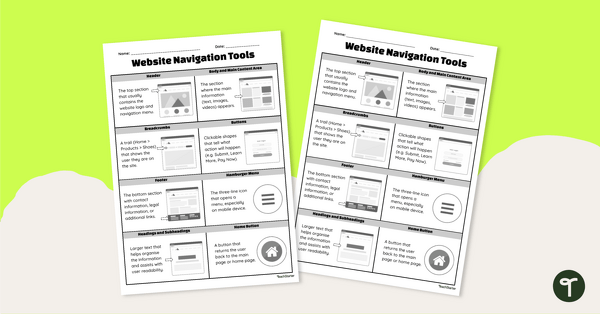
Website Navigation Tools Cheat Sheet
Teach your students about website navigation tools using this two-page cheat sheet that helps young learners easily recognise and understand the features of websites.
- Plus Plan

Picture Comprehension Worksheet Pack
Use this engaging Picture Comprehension Worksheet Pack to develop critical thinking and reading skills with your early years students.
- Plus Plan
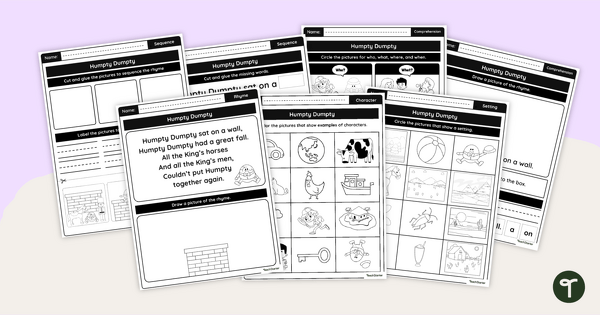
Narrative Features Worksheets - Humpty Dumpty
Identify characters, settings and parts of a story with early years reading worksheets featuring the Humpty Dumpty nursery rhyme.
- Plus Plan
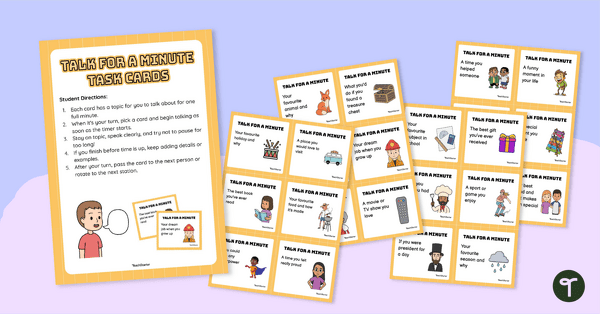
Talk for a Minute Task Cards
Encourage students to become confident speakers with these Talk for a Minute Task Cards.
- Plus Plan
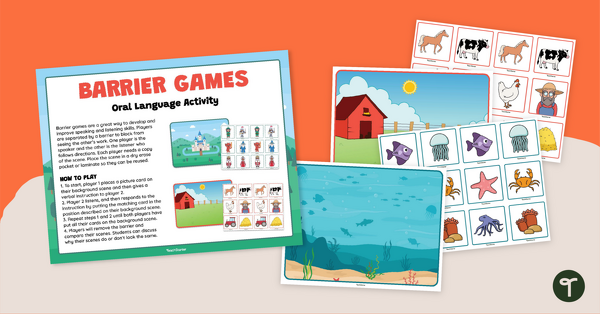
Oral Language Barrier Games
Use these Oral Language Barrier Games to develop oral language skills in the early years classroom.
- Plus Plan
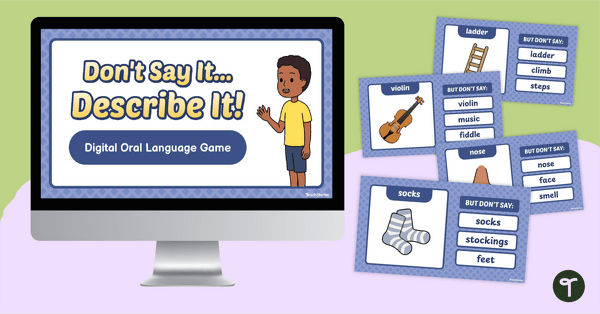
Describe It Game - Oral Language
Unlock the power of spoken language with this Don’t Say It… Describe it Oral Langauge Game.
- Plus Plan
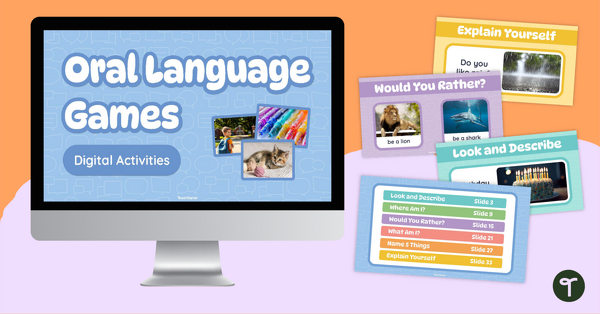
Oral Language Games - Digital Activity
Boost your students' oral language skills with this fun and engaging oral language game interactive.
- Plus Plan
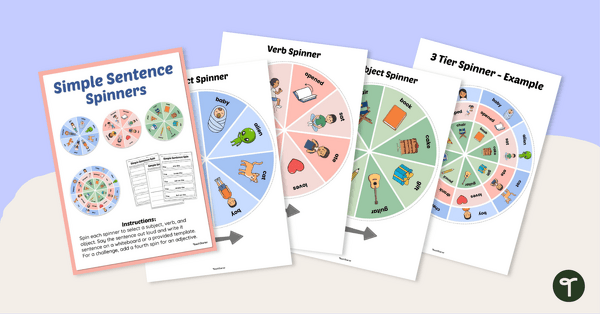
Simple Sentence Activity Spinner Template
Engage young writers with this fun and interactive Simple Sentence Activity - Spinner Template.
- Plus Plan
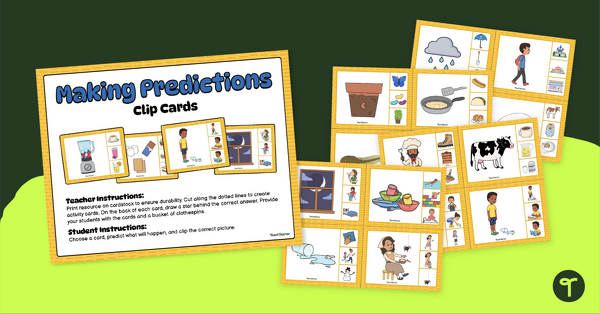
Pictures for Making Predictions – Clip Card Task Cards
Engage young learners in predicting with these Pictures for Making Predictions Clip Cards, no reading required.